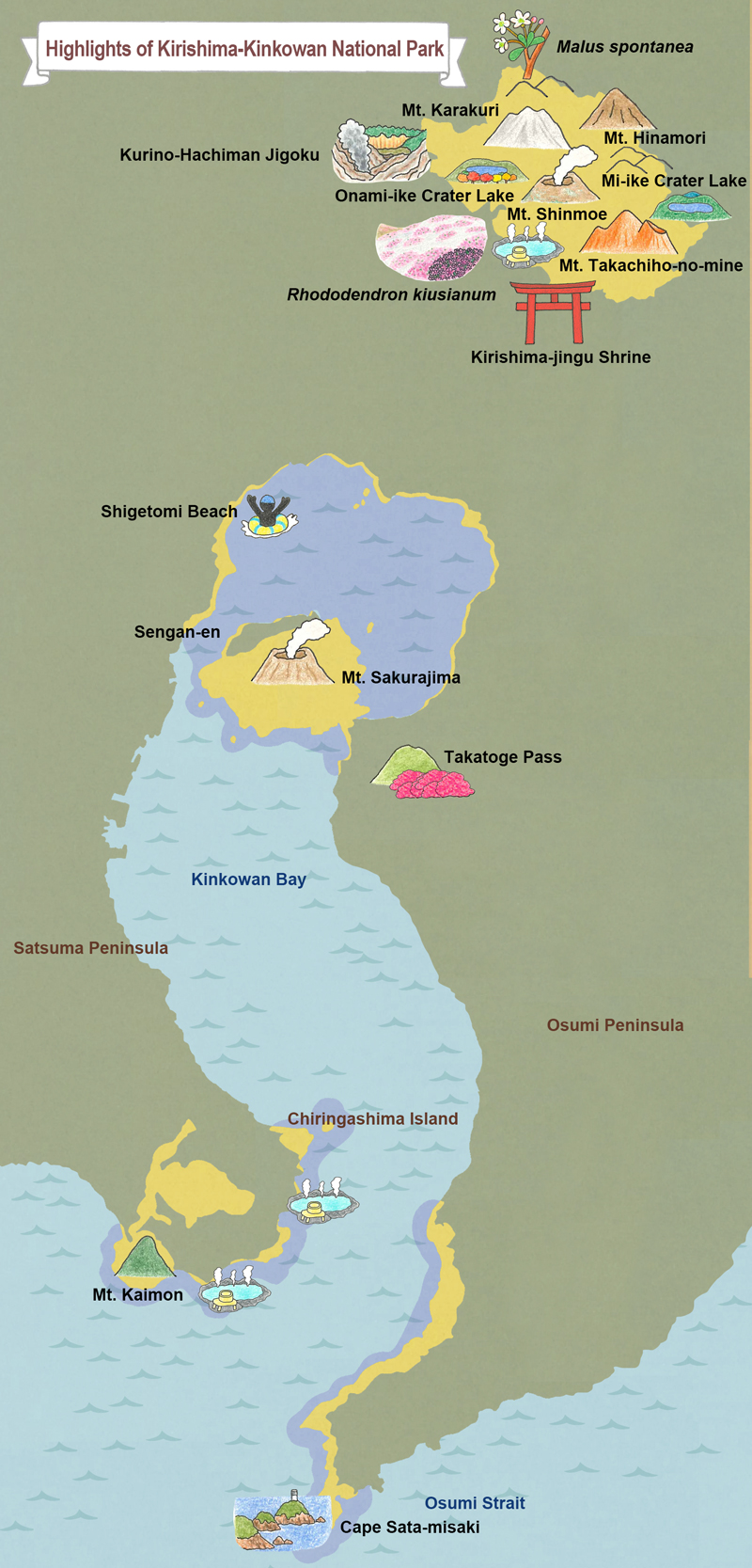- MOE
- National Parks of Japan
- Kirishima-Kinkowan National Park
- Guide of Highlights
main body
Highlights of Kirishima-Kinkowan National Park
Mt. Kaimon
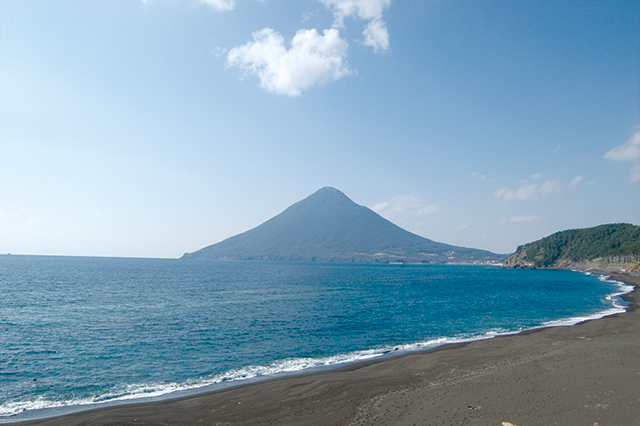
Mt. Kaimon
With its graceful lines, this volcano is also a symbol of the local area. Rising 922 m above the sea level, the mountain peak provides a 360° panoramic view, enabling you to see as far as Mt. Sakurajima, the Kirishima Mountain Range, the Osumi Peninsula, and Yakushima Island.
Chiringashima Island
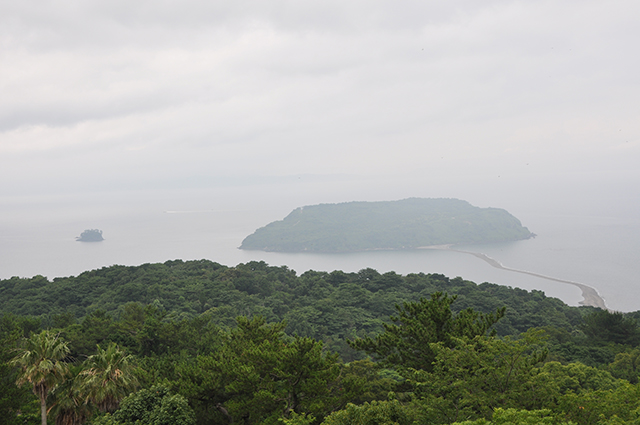
Chiringashima Island
This island rises from the sea to the north of Ibusuki Onsen, a hot spring area famous for sand baths. At low tide (around 80 times a year), a sandbar leading to the island appears, making it possible to walk to this land-tied island is around 30 minutes.
Cape Sata-misaki

Cape Sata-misaki
This is Kyushu's most southern point, and along the path provided from the car park to the observation deck grow many subtropical plants, such as Chinese fountain palm, fern palm, and large spiny tree fern.
Kurino-Hachiman Jigoku
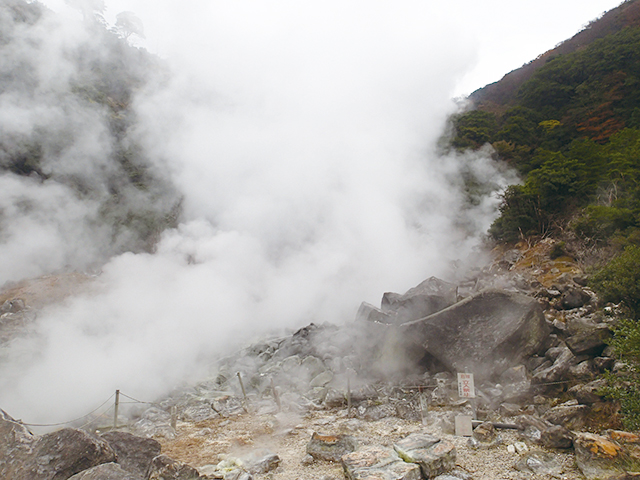
Kurino-Hachiman Jigoku
At the foot of Mt. Kurino--which is one of the oldest of the Kirishima volcanoes--there are jigoku ("hell") hot springs from which fumarolic gases spout violently (private property).
Mt. Hinamori
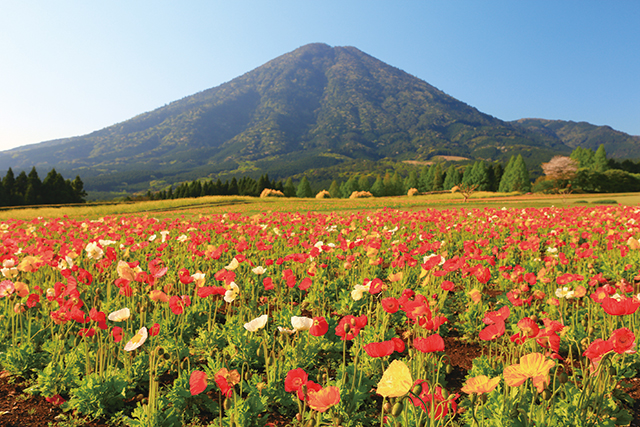
Photograph provided by Takeharu Nagatomo
Mt. Hinamori
This volcano (1,344 m above sea level) has a conical shape that is especially beautiful viewed from the northern side. The mountain is also called "Ikoma-Fuji", after the area surrounding its base.
Mt. Karakuri
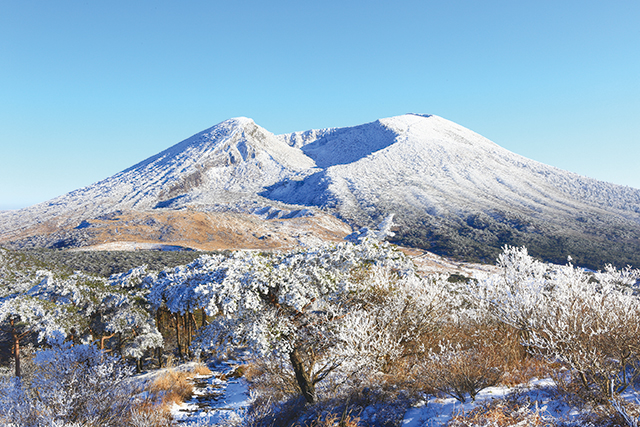
Photograph provided by Takeharu Nagatomo
Mt. Karakuri
This is the highest mountain in the park (1,700 m above sea level). Its crater measures 900 m in diameter and 300 m deep. The views from the top of the mountain are spectacular, and on fine days you can see Kinkowan Bay and Mt. Sakurajima, and even as far as Mt. Kaimon.
Onami-ike Crater Lake
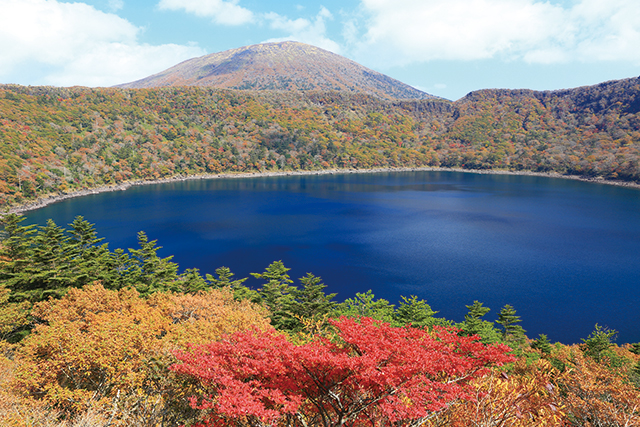
Photograph provided by Takeharu Nagatomo
Onami-ike Crater Lake
Spread out below Mt. Karakuri, this crater lake can be circled in approx. 1.5 hours. During the autumn foliage-viewing season, the colorful tree leaves and blue of the lake's surface combine to create a breathtaking scene.
Mt. Shinmoe
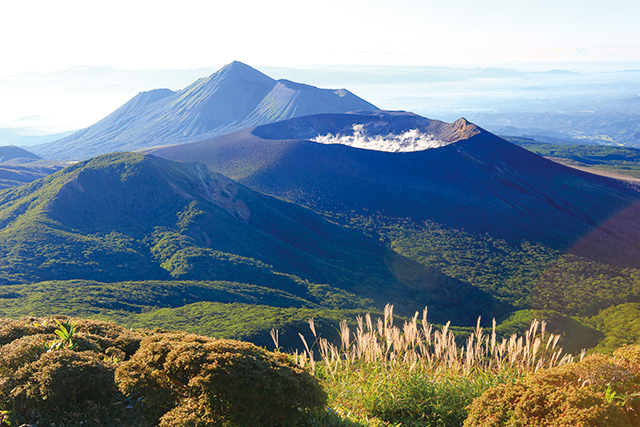
Photograph provided by Takeharu Nagatomo
Mt. Shinmoe
A volcano in the Kirishima region that is active today, Mt. Shinmoe erupted on a large scale in January 2011. It is possible to see inside the crater from the top of Mt. Karakuri.
Mt. Takachiho-no-mine
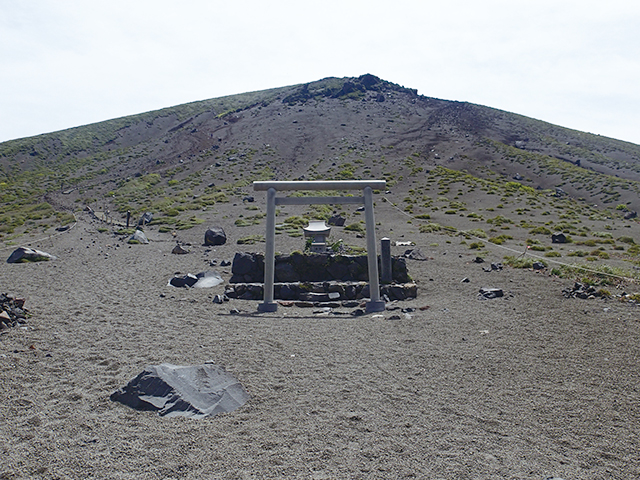
Mt. Takachiho-no-mine
This mysterious mountain appears in the myth of the descent to earth of the grandson of the sun goddess; along its hiking trails you can see patches of colorful Rhododendron kiusianum. The best time for flower-viewing is mid-to-late May.
Mi-ike Crater Lake
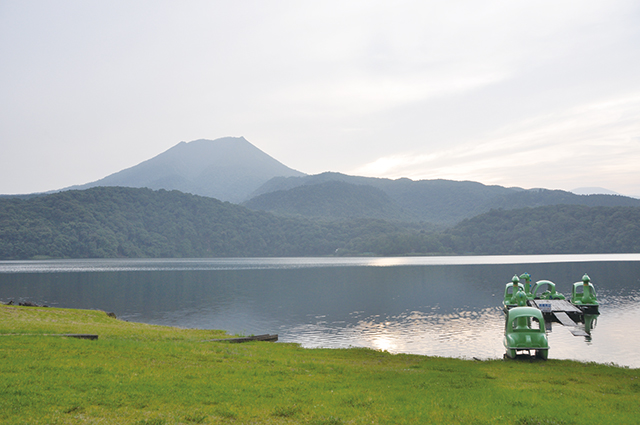
Mi-ike Crater Lake
Measuring approx. 4 km around and approx. 100 m deep, this is the largest crater lake in the Kirishima area and was created by the most explosive volcanic eruption in the history of Mt. Kirishima. Camping facilities are provided on the lakefront.
Kirishima-jingu Shrine
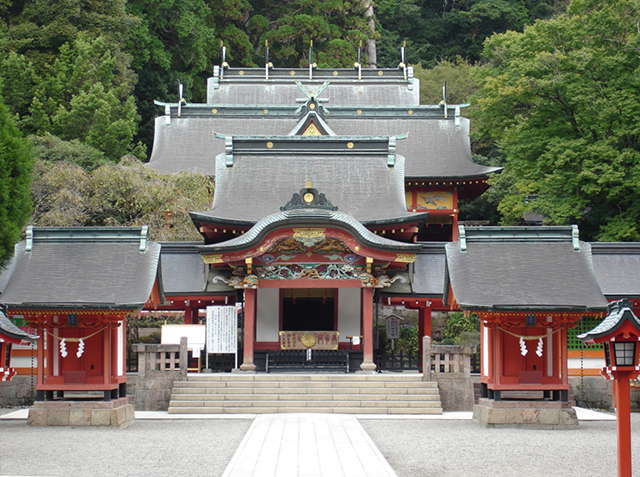
Kirishima-jingu Shrine
The primary deity of this shrine is Ninigi-no-Mikoto (grandson of the goddess Amaterasu, founder of Japan). Initially the shrine sat on Mt. Takachiho-no-mine, but due to the mountain's volcanic activity, the shrine was moved via the Takachiho Dry River Bed and rebuilt in its current location. Visitors come all year round to worship at this venerable place.
Shigetomi Beach

Shigetomi Beach
This area is characterized by its beautifully varied scenery, featuring the largest tidal flat in Kinkowan Bay, a beach with white sand and green pine trees stretching for several hundred meters, and a majestic view of Mt. Sakurajima. In summer, the coast is lively with many visitors who come to swim in the ocean.
Sengan-en

Sengan-en
A traditional Japanese garden attached to a former residence of the Shimazu clan. It was built by Shimazu Mitsuhisa, the 19th head of the Shimazu clan in 1658. The garden beautifully uses the majestic Mt. Sakurajima and Kinkowan Bay as an artificial mountain and pond, respectively, to create a magnificent borrowed landscape. It is deemed to be one of the famous gardens of Japan and was designated a National Place of Scenic Beauty in 1958.
Mt. Sakurajima

Mt. Sakurajima
Located in the center of the park, this volcano can be viewed from anywhere in the surrounding area. The eruptions and ash showers continue sporadically even today, giving you a sense of the powerful energy the Earth possesses.
Takatoge Pass

Takatoge Pass
From the top of Takatoge Pass you can enjoy a magnificent view of Mt. Sakurajima, Kinkowan Bay, the Kirishima Mountain Range, and other sights. Also, the pass is maintained as part of the Takatoge Tsutsujigaoka Park, and in springtime the area is lively with many visitors come to enjoy the flower-viewing.
Onsen (Hot Springs)

Onsen (Hot Springs)
Hot springs, the bounty of the volcano, are found throughout this park. Enjoyed by visitors from all over the region for hot spring cures for centuries. Well-known for its various types of springs (e.g., sulfur springs, carbonated springs).
Wildlife & Plants
Malus spontanea

Photograph provided by Takeyoshi Kamamiya
Malus spontanea
A wild species of the rose family found nowhere else in the world but Mt. Kirishima. The pale pink flowers bloom in early May.
Rhododendron kiusianum

Photograph provided by Takeyoshi Kamamiya
Rhododendron kiusianum
A species of the Azalea family. Found in the high mountains of Kyushu. The prevalent variety on the slopes of mountains on which the ecosystem is disturbed by volcanic activity, and therefore, is found in large numbers around volcanoes. Covers the entire mountainside in pink when in bloom.
